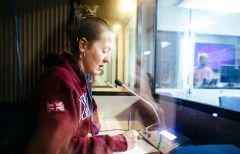Bridging Language Gap for Elders
| by Eva Gudbergsdottir
What started out as a class project for Middlebury Institute students Helen Bartlett and Meng Zhang, Translators for Elders is a new crowdsourcing initiative to provide translation services for older citizens, bridging an important and often overlooked language barrier.




